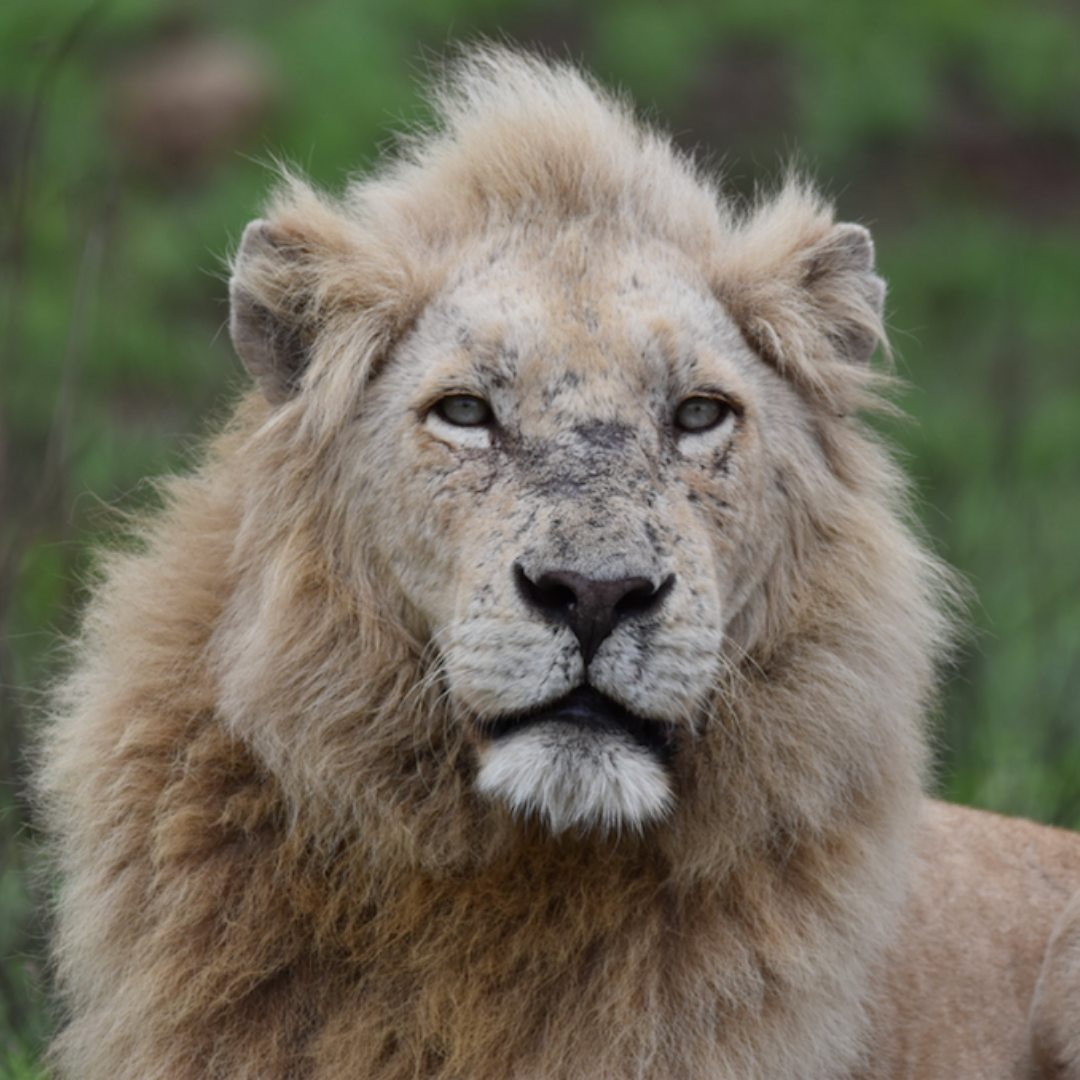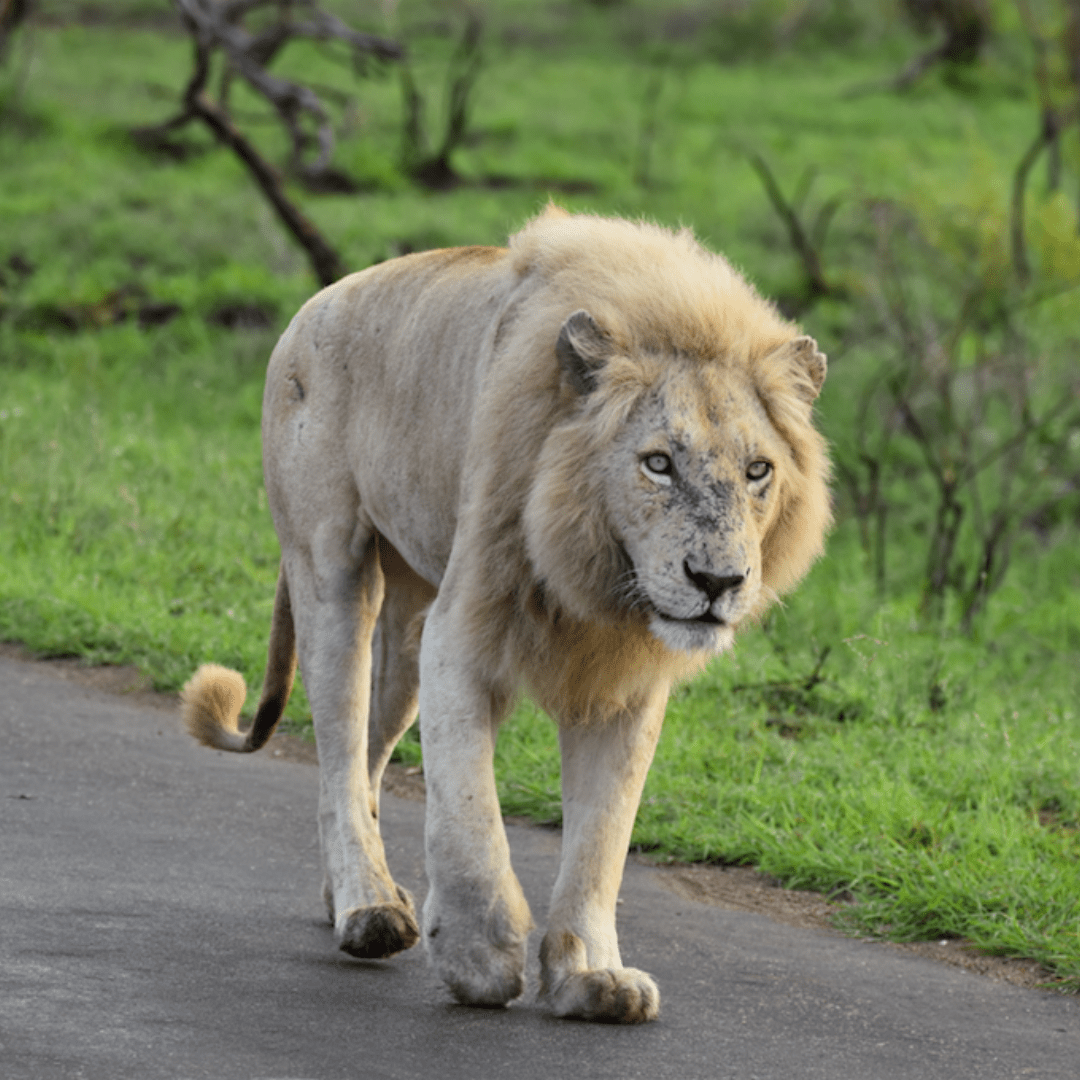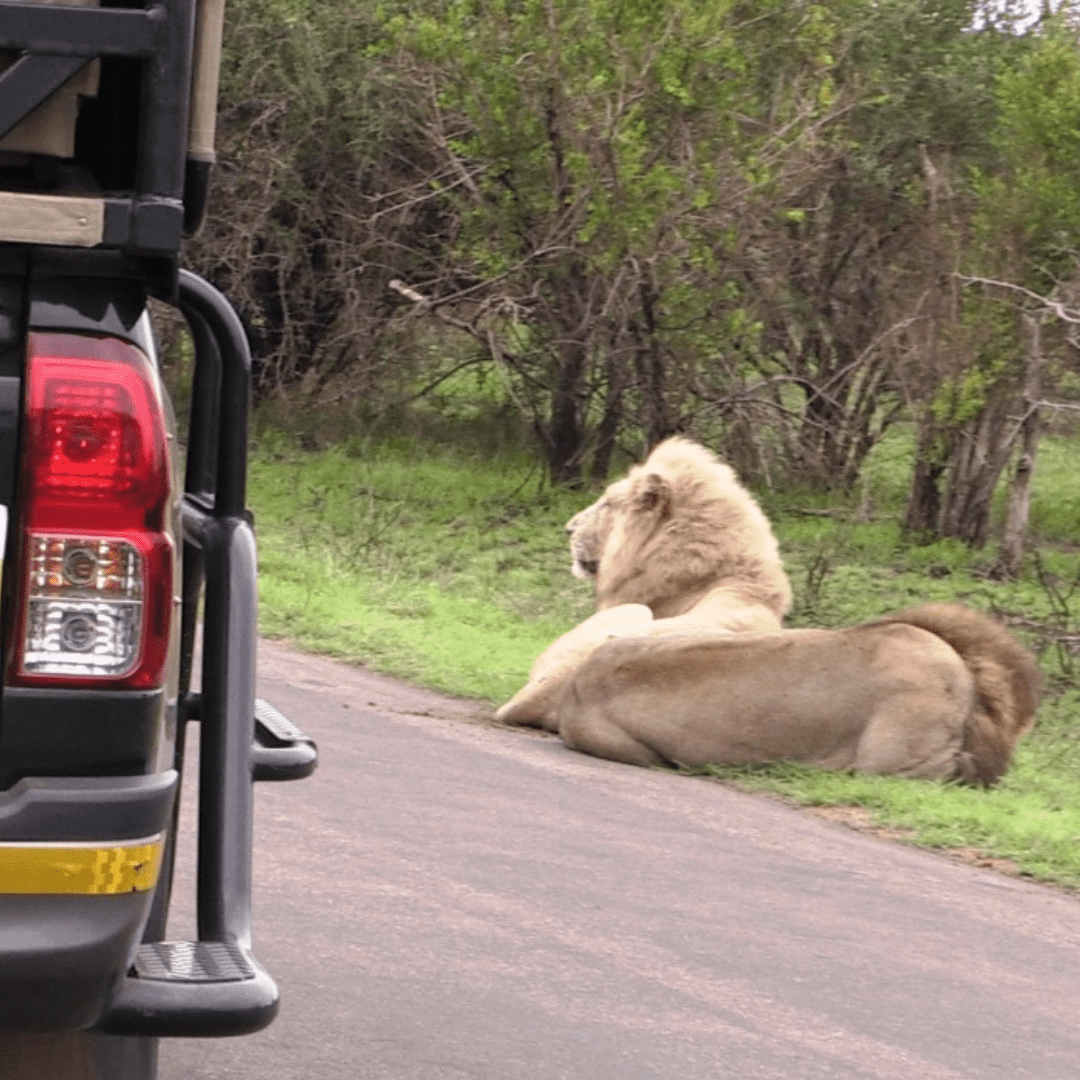
Casper the famous White Lion of the Kruger National Park
During the course of Covid there was a particular Lion in the Kruger National Park that became rather famous thanks to programs like WildEarth and the droves of South Africas that visited Kruger National Park once the lockdowns where lifted and you could travel . That animal was none other than Casper, the White Lion of Kruger National Park.
His celebrity status shot through the roof of course because he is white and that is incredibly rare. If you love Lions and are an avid traveller who likes going on Safari or perhaps you have watched an exceptional amount of National Geographic over the years, you may have come across a old famous documentary called the “the white Lions of the Timbavati”. These fabled few where the first to get our attention and stirred up a lot of conversation regarding the rare abnormality of a White Lion gene.
Lets firstly clarify that there are three genetic conditions that occur in the wild that directly effect the melanin levels of a mammal. These are Melanism, Leucism and Albinism. The term Melanistic refers to an over supply of the dark color gene and this leads to an animal having a darker than usual appearance. This is usually very apparent in species with a golden to dark brown coloration. Leucism or being Leucitic, is the opposite, if refers to very diluted coloration but its important to not that its not the complete absence of melanin, but rather a very limited supply of it and this rendering the specific individual rather light fair to near white in coloration. Only when there is a complete absence, and usually indicated by a red eye, pink feet or pads or gum-line, do when then say that its an Albino. An Albino is completely void of melanin.
So then why is Casper so important ?
Casper the White Lion of Kruger must now be roughly 6 to 7 years of age. What significant about that is that most White Lions don't make it past the 3 to 4 years of age. The primary reason is that being has its disadvantages, namely you stick out and are the first to be seen and picked on by either your own kind or others. In Lions there is about a 50% rate of infanticide which means half of all the cubs born will die. If thats the relative ratio then already every Lion to make it to adulthood, +-2 years of age, is then already luck too have survived such a gauntlet. Just because you have then survived doesn’t mean that your are in the clear. Males Lions fight for a territory and of course all the females in it so at any stage you could be overt thrown by a hostile take over and the first to be killed will be the existing large Males, the cubs and anything else that sticks out. Being a White Lion and a Male means Casper is high in the hit list. Whats amazing though is that he has managed to navigate his way though is younger years, becoming a sub-adult and onto a full grown male Lion. This is absolutely remarkable and is the first account in the Kruger National Park of this happening so it is indeed very special. Yes there have been other White Lions and there is currently a young sub-adult male that lives amongst the Talamati pride west of Caspers territory between Ngala Private Reserve and Orpen Camp.



So how is it that Casper has managed to survive for such a long period of time ?
There are a number of factors that influence his existence and two very important ones that we think have directly and positively impacted his life. Firstly Casper lives around Satara Camp in the Central Kruger National Park and occupies a territory thats sits between the famous S100 (nwanetsi river) and the Apple-Leaf groves around Ntomeni water point just to the north. This is absolutely prime territory and is also reason why the calls this Lion Central which roughly 60 to 70% of Krugers Lions taking up residence in the Central Region. The particular region of Kruger offers the widest expanses of open grasslands in Kruger.
The soils are made up of a combination of echo shale to dark basalts and then onto the Rhyliotes of the Lebombo range. These dense soils capture and hold water and leach the nutrients as a result of the flat topography and this provide the perfect habitat for sweet palatable grasses. Naturally when you have the right food resource you attract the game and so the central grasslands team with Impala, Zebra and Blue Wildebeest as well as Kudu and Giraffe along the drainage areas where there are larger trees and good browse. What we do know in Kruger thanks to decades of research is that where there is a greater food resource we find larger prides of Lions with the largest being along the Eastern borders as a result of good geology and a rich food resource. So Casper is fortunate in that he is in a territory saturated with abundant food but that of course leads to the next point. Having some of the best real-estate means that it needs to also be protected. This is perhaps the most important aspect of Caspers existence, he is a part of a coalition of 4 large male lions. As a mature male Lion your very existence is dependant on the strength of your coalition. Fighting is a way of Lion and on average a Male Lion lives for 10 years and in the end dies a horrible death as a result of his territory being taken over by more power males. There is some research that suggests a single can successfully hold a territory for 18 months, 2 Males can maintain territory for up to 3 years and 3 or more males can hold a territory for as long as 8 years.
In Caspers case he forms part of a coalition of 4 large adult males with two in particular being mature and very big. This is and continues too be the single most important aspect of his survival in that he has protection. Whilst he stands out he has 3 big brothers to help protect him from other males and this sense of security has allowed him to mature into the fine looking male that he is today.








